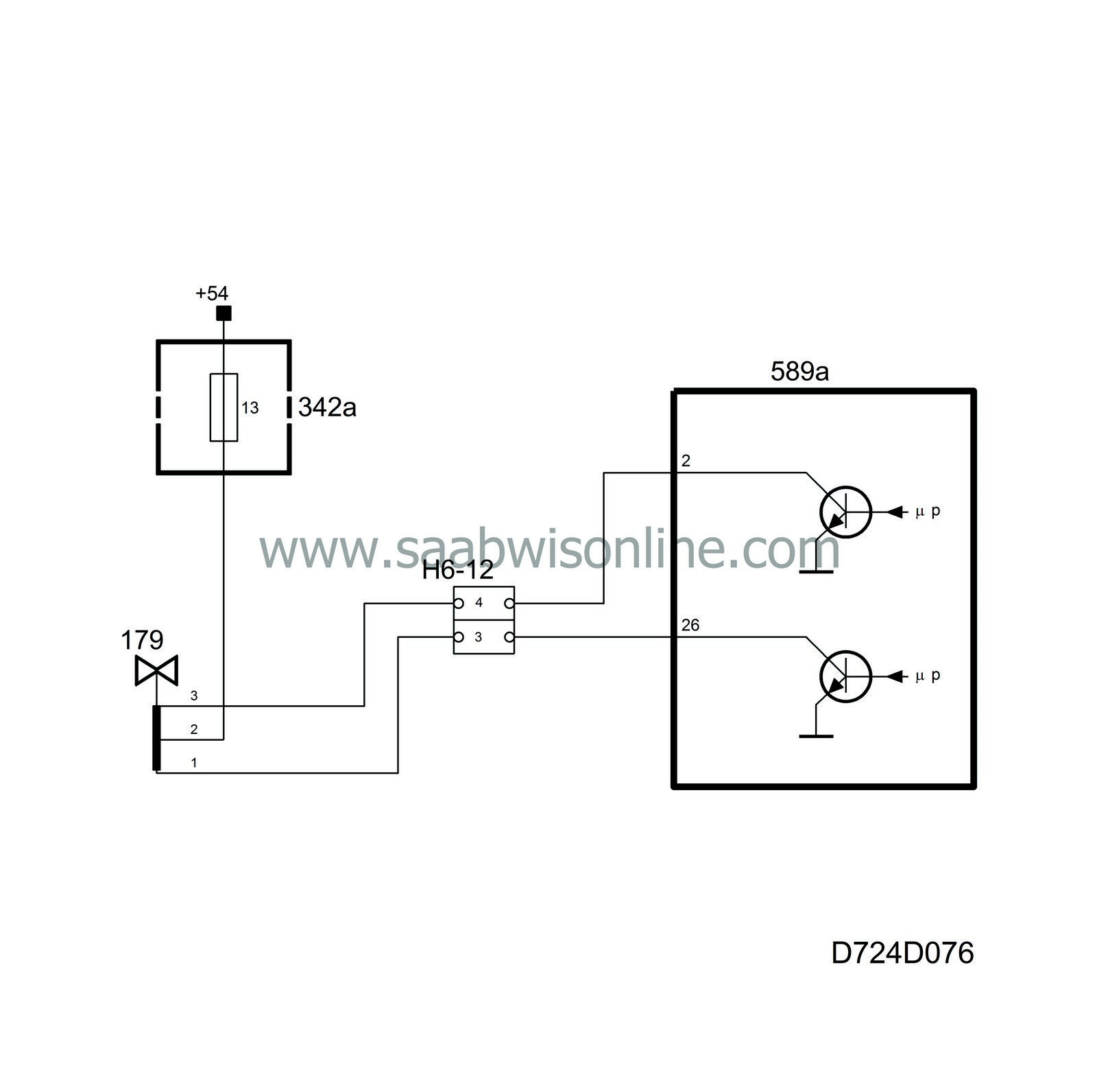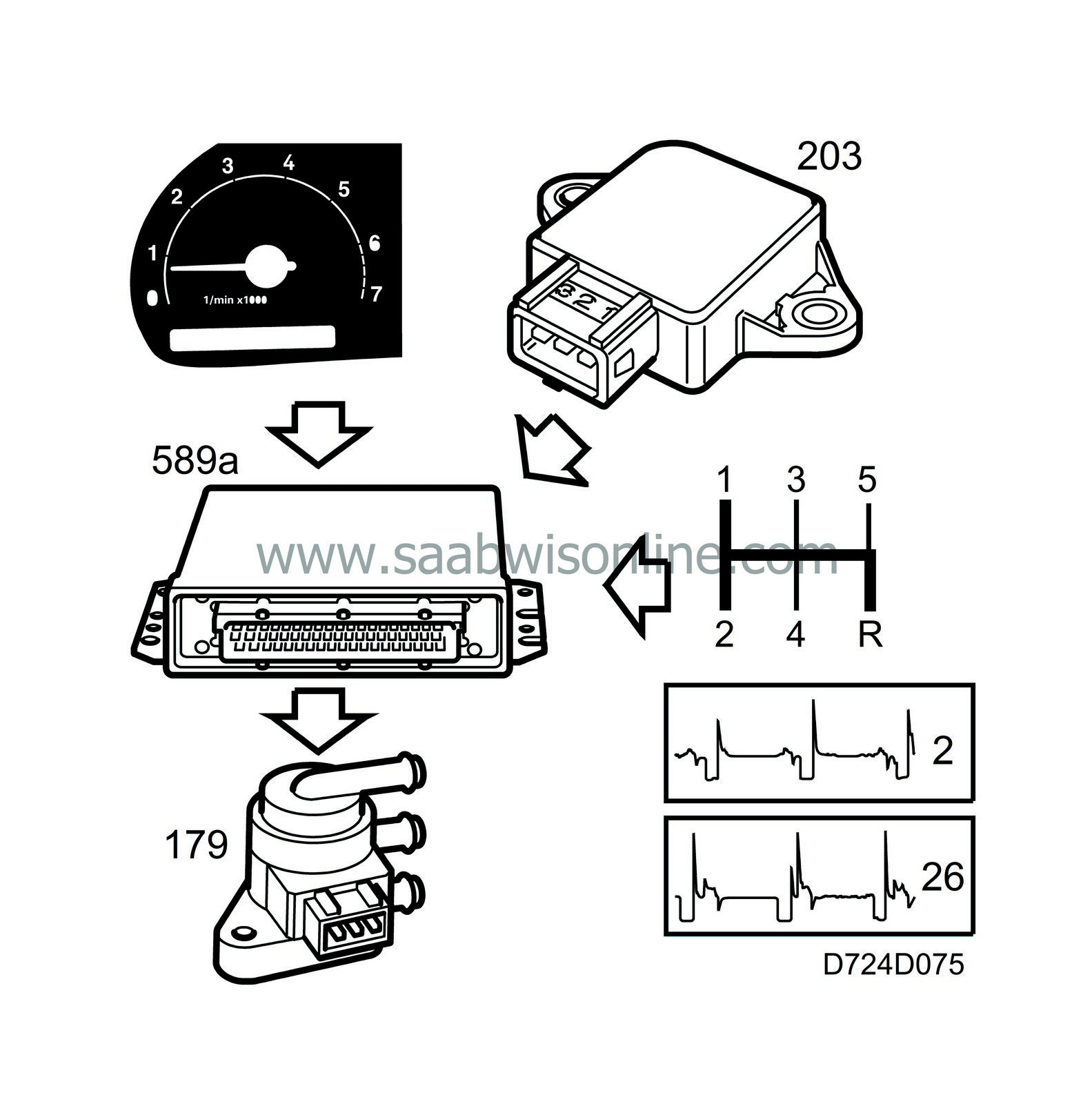|
Note
|
|
There is no diagnosis for faults where the requested boost pressure cannot be attained. If a boost pressure control malfunction is suspected, Tech 2 should be used to see if a boost pressure limiting function is active first. Note that Tech 2 will not indicate the presence of a limitation for low gear. If Tech 2 indicates U for the gear in question then the vehicle speed signal is probably absent.
|
|
If there are no active functions limiting the requested pressure and the correct gear is indicated then the pressure specified in technical data should be attainable during a road test.
|
|
The following faults will result in the boost pressure control being absent (basic charging pressure):
|
|
•
|
Break in the lead from control module pin 26 or +54 supply to the valve.
|
|
•
|
Defective charge air control valve.
|
|
The following faults will cause the boost pressure to be higher than the requested. The control module will then stop fuel injection as a safety precaution.
|
|
•
|
Break in the lead from control module pin 2.
|
|
•
|
Defective charge air control valve.
|
|
•
|
Break in any of the hoses marked W or C.
|
|
•
|
Defective wastegate or diaphragm box.
|
|
Control module outputs on pins 2 and 26 are not short-circuit protected. Therefore, a short-circuited valve can burn out a new control module. A burned control module can then burn out and short-circuit a new valve.
|
|
It is therefore advisable to first check that the control module is in working order before connecting a new valve.
|
|
The control module can be checked easily by connecting test lamp 86 11 857 between pins 2 and 1 on the control module and pins 2 and 3 in the valve's female connector respectively and then racing the engine. The control module is in working order if the test lamp flickers.
|
|
Before performing a road test after completed repairs, it is advisable to zero boost pressure adaptation, either with Tech 2 activation or by terminating the current to the control module. If a fault causing low boost pressure has been rectified, the boost pressure adaptation is probably at maximum. This may activate the pressure switch during the road test before the adaptation has returned to normal values unless it has been zeroed first.
|




